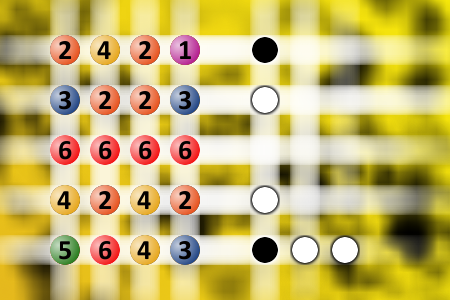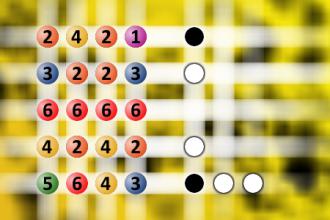What a winning combination?
The computer chose a secret code (sequence of 4 digits from 1 to 6). Your goal is to find that code. Black circles indicate the number of hits on the right spot. White circles indicate the number of hits on the wrong spot.Correct answers: 30
The first user who solved this task is Nílton Corrêa De Sousa.
#brainteasers #mastermind

The golfer and the funeral
A golfer and his buddies were playing a big round of golf for $200.
At the eighteenth green the golfer had a ten foot putt to win the round, and the $200.
As he was lining up his putt, a funeral procession started to pass by.
The golfer set down his putter, took his hat off, placed it over his chest, and waited for the funeral procession to pass.
After it passed, he picked up his putter and returned to lining up his putt, and completed it, thus winning the game and the money.
Afterwards, one of his buddies said, "That was the most touching thing I have ever seen.
I can't believe you stopped playing, possibly losing your concentration, to pay your respects."
"Well," said the golfer, "we were married for 25 years."

